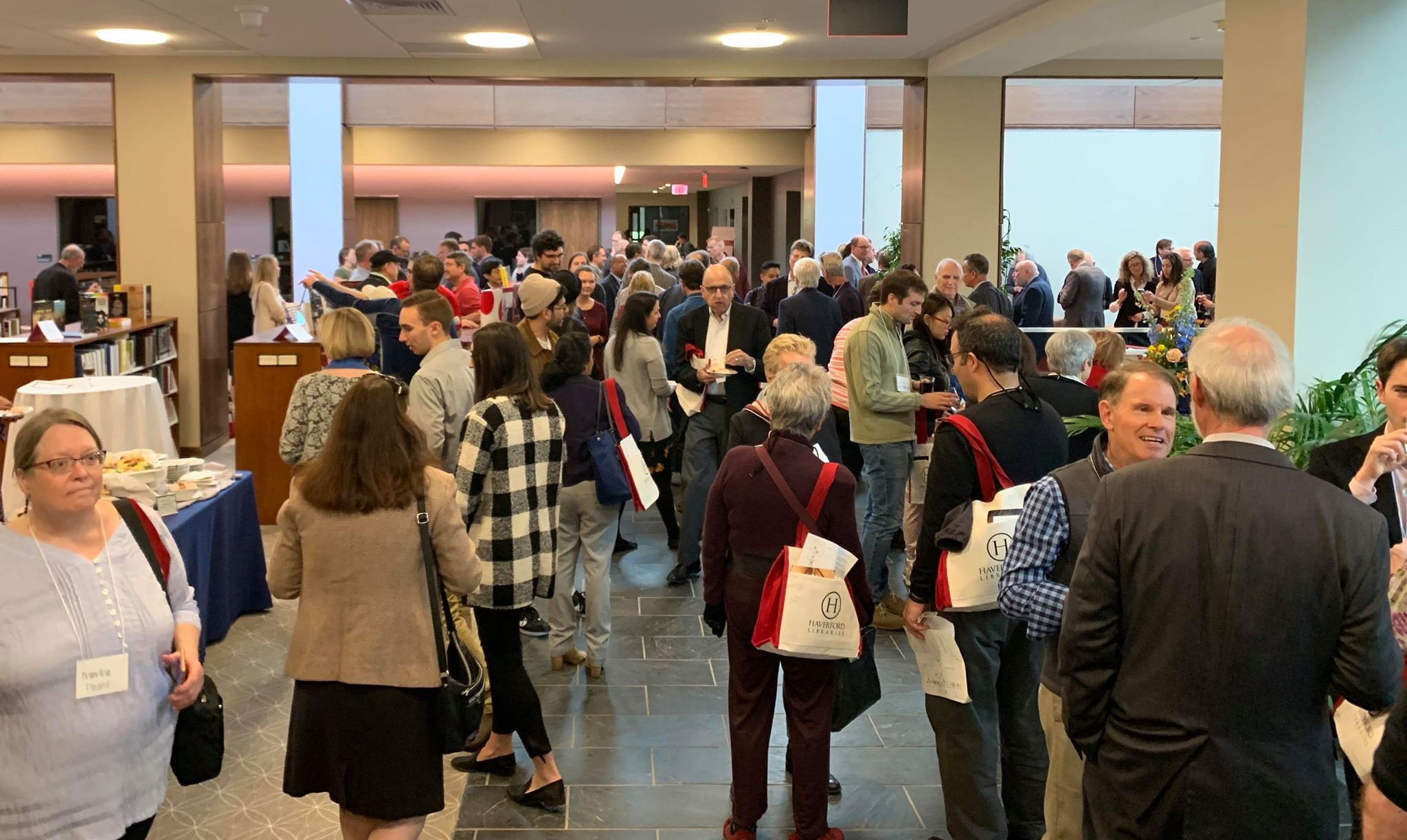By Adrian Velonis, Staff Editor
On Saturday, October 26th, administrators, students, alumni, and donors gathered on the main floor of Haverford’s Lutnick Library, formerly McGill Library, for the building’s official dedication. Haverford President Wendy Raymond, inaugurated earlier this year, welcomed the group in the early afternoon. President Raymond’s speech was followed by remarks from Chair of the Board of Managers Charley G. Beever (‘74), Provost Frances Rose Blase, and Chief Library Administrator Terry Snyder, as well as a ribbon cutting from Howard ‘83 and Allison Lutnick. Several students hosted research presentations and other informative opportunities.

Lutnick’s West Wing 
Pre-1500 books 
Artifacts on display
Under construction since January of 2018, the newly renovated library offers a welcome return to normality for students, whose primary place of study has been inaccessible for three consecutive semesters. Although other libraries on campus remained open during the interim, such as the Gilbert F. White Science Library in the Koshland Integrated Natural Sciences Center (KINSC) and the Music Library in Union Hall, the library was geographically central and offered a significant amount of seating and study space, so its presence was missed.
What is now Lutnick has been in a state of development since the construction of Alumni Hall in 1864, when the contents of the college’s library first moved out of Founders Hall. 1898 saw the addition of the South Wing, and 1912 an addition in the northwest and additional stacks for the increasing number of books that had been acquired by the library.
In 1941, the building was further expanded on its far side (opposite from Founders Green) to house additional collection stacks, as well as a catalog and staff room. The Rufus Jones Study was built in 1951 to commemorate Jones, an alumnus from the Class of 1885 and a professor of philosophy and psychology at Haverford, who died in 1948. The next year, the library’s North Wing was renamed the Philips Wing in honor of William Pyle Philips, whose collection had recently been donated.
The library’s next expansion took place in 1967, on the side of the library facing Leeds Green, in order to house Quaker & Special Collections. At this time, the building was renamed for James Magill, a graduate from the Class of 1907 and the Emeritus Vice Chairman of the Board of Managers of Haverford. It was followed shortly thereafter by the dedication of the Christopher Morley Alcove between the Philips and South Wings.
For the next 50 years, no major structural changes were made to Magill, but with a $25 million donation from Board Chair Howard W. Lutnick ‘83 in 2014 (comprising only a part of his total $65 million given to the college over his lifetime), the college initiated plans to redo large sections of the building in order to “launch the facility as a beautiful, state-of-the art institution that will truly transform the entire campus.”
The recent construction saw the demolition of parts of the library built between 1941 and 1967 (pictured), with some sections being rebuilt as needed. Portions of the library had windows restored, furniture replaced, and flooring redone, and skylights were added on the roof in one of the newly constructed sections. The North Terrace, architecturally distinctive because of its resemblance to two of the college’s newest dormitories, Tritton and Kim Halls, replaced the demolished 1941 section. The original 1898 section of the library was also renamed the Magill Wing. The nearby Carvill Arch, named for landscaper William Carvill, who was responsible for much of the college’s lawns and natural spaces, was not moved during construction.

Demolition of the 1941 wing 
The fully renovated library
According to the Library Building Project page on Haverford’s website, it presently offers “technologically robust spaces, active teaching and learning spaces, a Digital Scholarship Commons, a significantly enhanced Quaker & Special Collections; collaborative Group Study Rooms as well as quiet, group and individual research and study spaces. The café will be a welcome addition for the many students who spend countless hours working in the library.”
With the 2019–20 academic year well underway, Lutnick Library has been an important part of academic life for many students at Haverford. They may rest easy with the knowledge that the renovations are now complete, and the library will serve its intended function at last.
Sources: Haverford library building project, Haverford College communications, The New York Times
Image credit: Adrian Velonis, Haverford College
